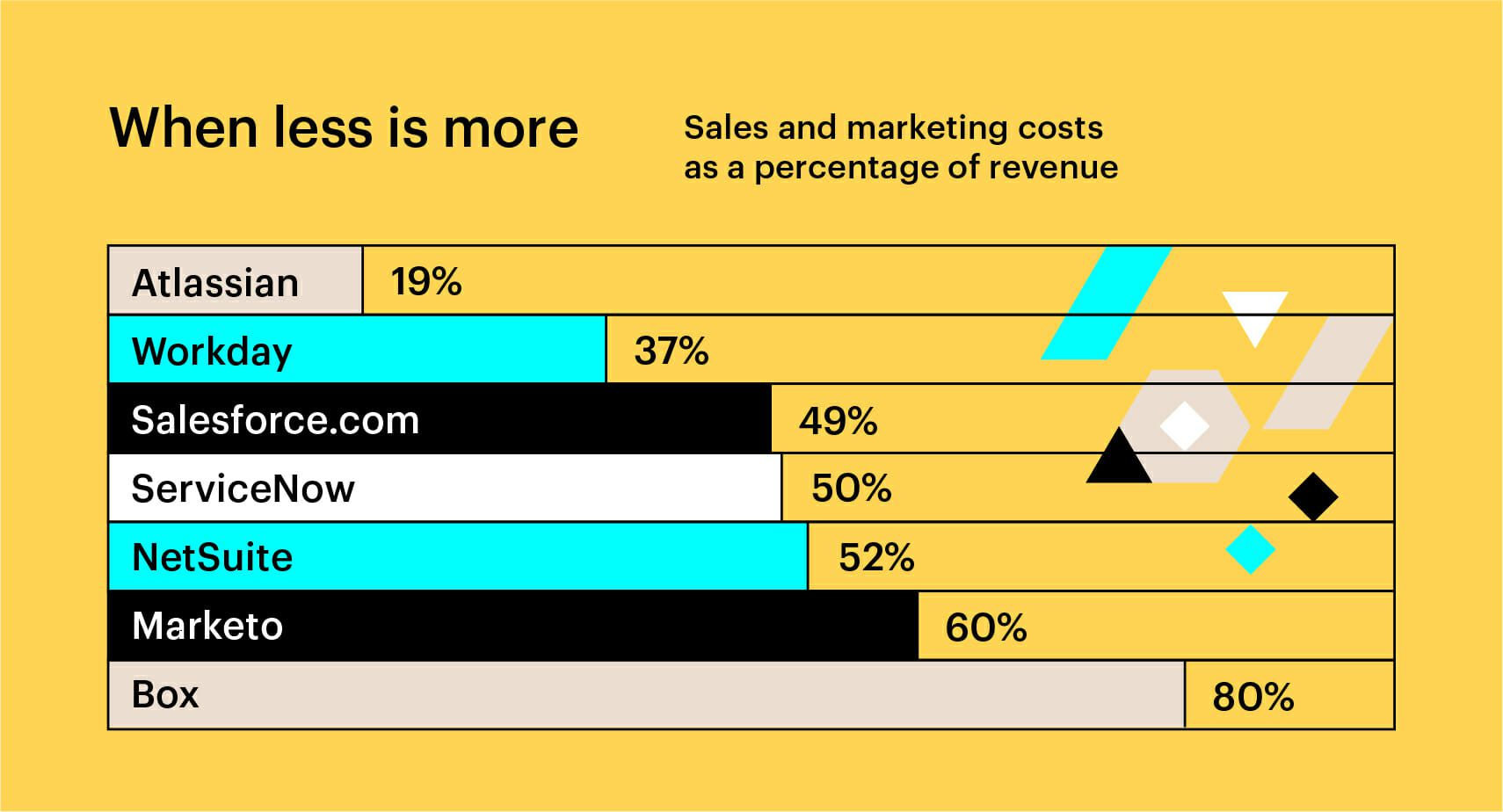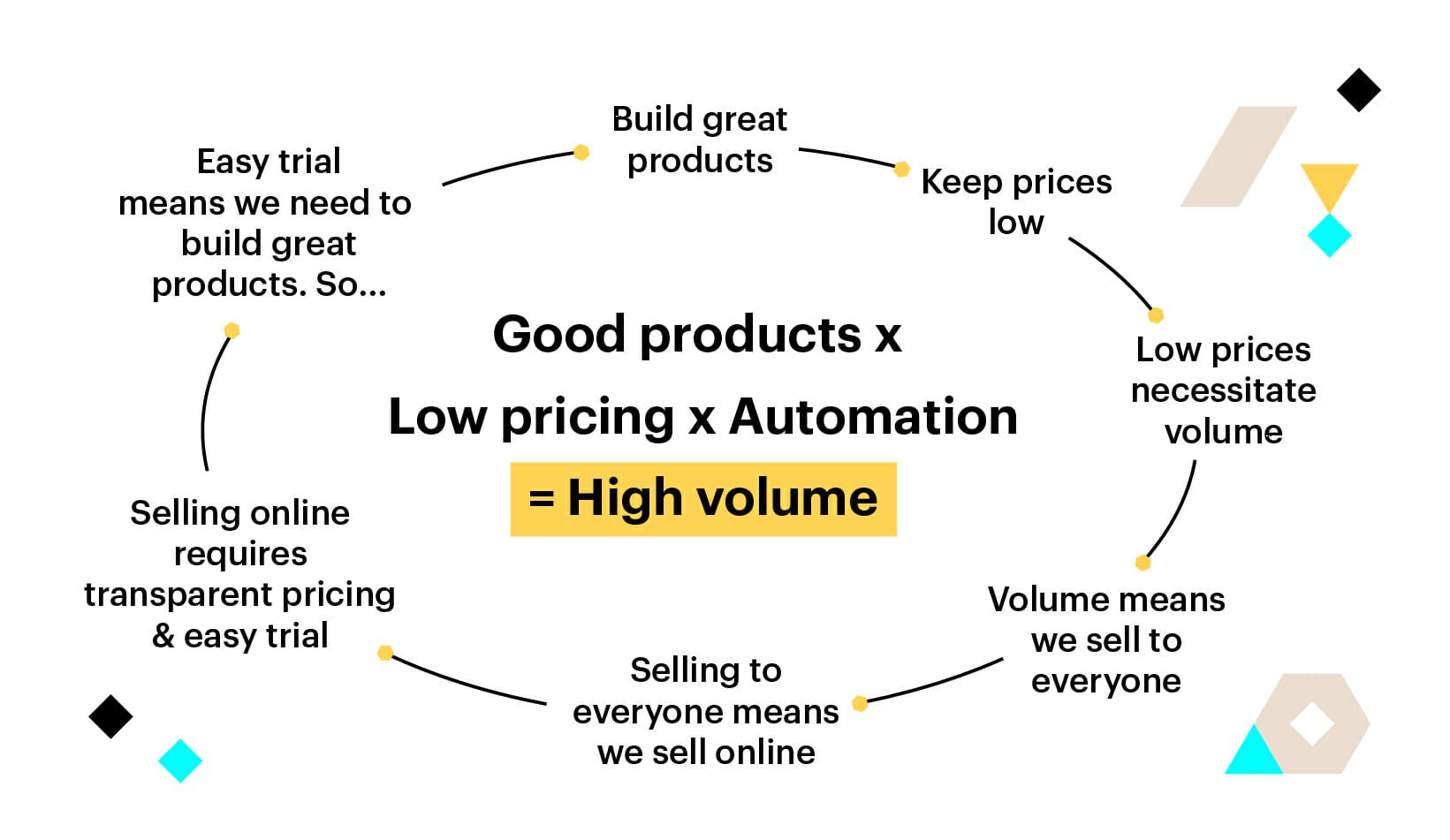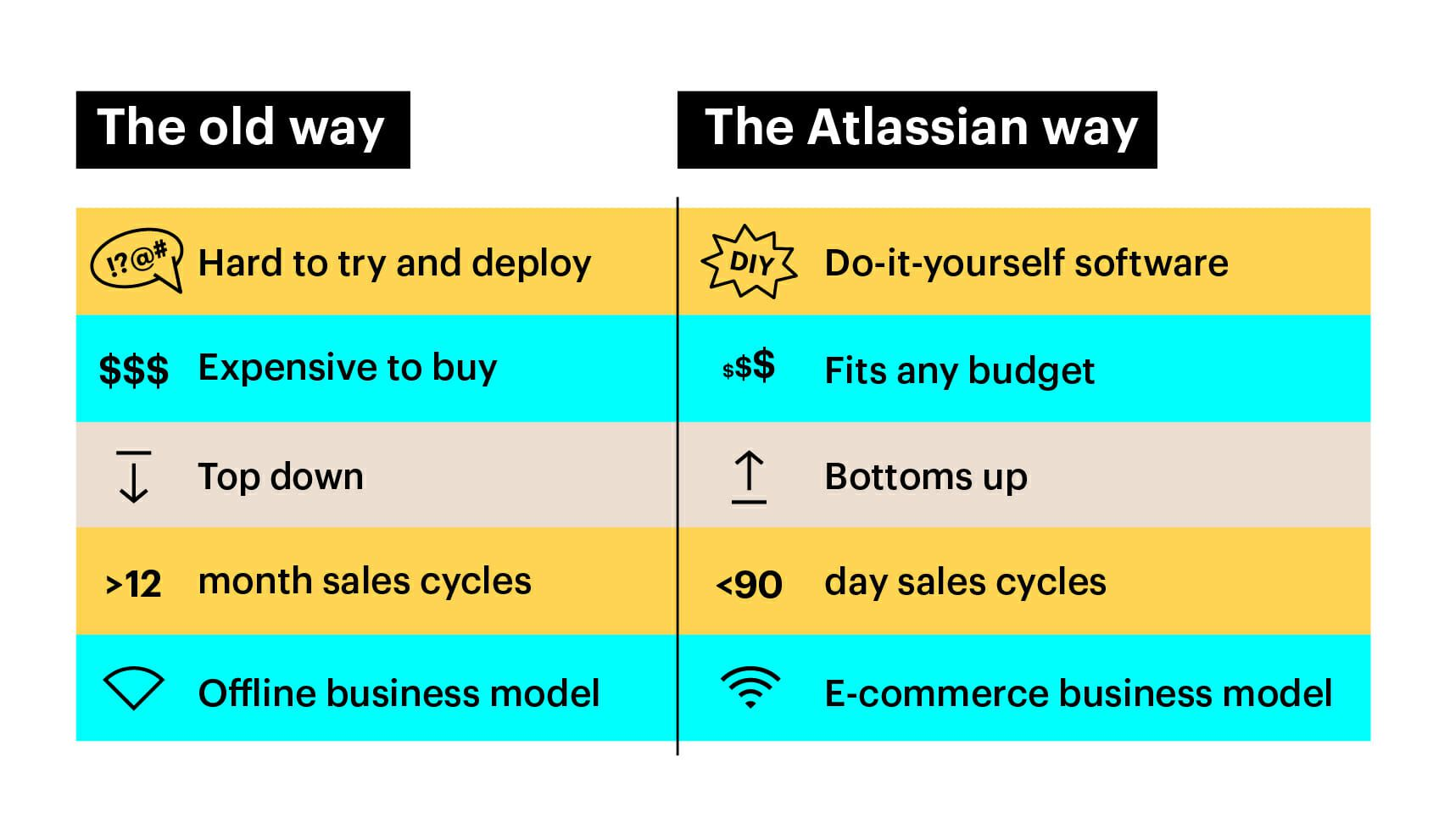How Atlassian built a $20 billion company with a unique sales model
Overview ATTACH
At the time of their IPO, only 19% of their revenue was spent on sales and marketing, a fraction of the spend of other companies of their size.
 We sat down with Atlassian’s President, Jay Simons, to get an inside look at how it works.
We sat down with Atlassian’s President, Jay Simons, to get an inside look at how it works.
It all starts with a remarkable product ATTACH
Atlassian’s key early strategic insight was that their products could sell themselves, but only when the key ingredients are in place – a great product, with a passionate userbase who are willing to become advocates for your product both internally and externally.

Why the low touch sales model works for the 21st century buyer
Think about how you buy – you Google it, ask your friends, talk to colleagues.
In this new world, buyers are already armed with lots of information about your product and your company – they might already be playing with a free trial, getting a feel for how your product can solve their pain points. In these situations, the best way to get ahead isn’t to force them to jump on a sales call. It’s to help them get into the product and realize value as quickly as possible.
Low touch sales doesn’t mean no touch ATTACH
It almost sounds like magic. You put your product on your website, you drive traffic, and it miraculously, effortlessly sells itself.

The benefits of a transparent pricing model
A really common friction point that people insert is cost. I’m not going to share with you how much the products costs on our website, or you have to contact us to find out.
The low touch sales model isn’t for everyone
If I were Workday, for example, and I see my market as the 2,000 biggest companies on the planet, I don’t think Atlassian’s models are appropriate for that. Buying Workday is a single, largely top down decision, insofar as you’re not going to pick multiple human resource management systems. You’re going to pick one, and it’s going to be sponsored by the head of HR and probably the CIO. That is a top down, consultative and likely long sales cycle. That’s not a try, buy, begin and expand model.